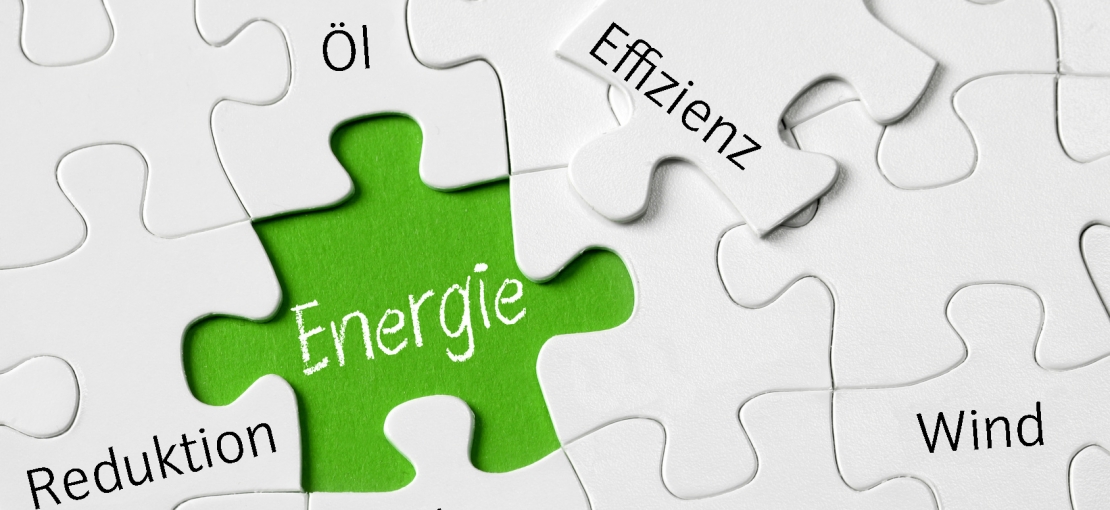
Energy conservation as an important goal
The best energy is that which you don't use
At the company headquarters in Tettnang-Obereisenbach, we have almost full control over how we deal with energy. In 2008 VAUDE introduced an environmental management system and has been certified according to EMAS and ISO14001 since that time.
Energy management plays a big role: all energy consumption is recorded and evaluated annually. From the results, we derive goals and measures. EMAS requires a commitment to a continuous improvement process in the energy sector.
We have been working consistently since 2008 in Tettnang-Obereisenbach for:
- continuous reduction of energy consumption.
- conversion of energy consumption to renewable sources
On both issues, we have already made great progress. Here are some examples:
- In 2013, we reduced electricity consumption by ten percent compared to 2012.
- The electricity consumed by VAUDE in Tettnang-Obereisenbach electricity has comes from 100% renewable sources since mid-2009. These include wind, solar, hydro or biomass - see „100 percent renewable energy “.
- Since October 2013, we have used biogas that comes 100 percent from sugar manufacturing waste. This goal was reached two years earlier than planned - see "Heating with gas“ .
- The photovoltaic system on the company roofs has produces enough electricity (99 percent) for the entire facilities at this location – see „Solarenergie „made by VAUDE““.
Target: 20 percent less electricity per employee by 2015
The best energy is still that which we don’t consume. Reducing energy consumption is therefore an important target for VAUDE in Tettnang-Obereisenbach.
Our concrete goal: by 2015, we will reduced our electricity consumption per employee by 20 percent compared to 2011. In 2013, we achieved a reduction of 14 percent compared to 2011 - see also "100 percent renewable energy“.
| GRI: | DMA Energy |
Company headquarters in Tettnang are climate neutral
Another of VAUDE’s important goal is climate neutrality of the entire company. Energy consumption contributes significantly to the production of greenhouse gases such as carbon dioxide (CO2).
To compensate for the negative impact of our energy consumption, we have compensated for our total power consumption (in addition to other consumption such as for materials) at our headquarters in Tettnang-Obereisenbach through myclimate. The entire VAUDE site in Tettnang-Obereisenbach including bag manufacturing there is considered "climate neutral." - see „Climate-neutrality at the company headquarters in Tettnang“.
High energy efficiency in the new office building
VAUDE is currently renovating a part of the building that had been used as a warehouse, in accordance with DGNB standards (German Sustainable Building Council) to make offices. Energy efficiency plays a prominent role in this process. The building will have a very high energy efficiency standard due to better insulation and clever lighting solutions.
Production in the supply chain also requires energy
The vast majority of our products are produced outside the company headquarters at Tettnang-Obereisenbach In contrast to the situation at the company headquarters, VAUDE has very little control over how the upstream supply chain handles energy.
The preparation of materials and components, such as fabrics or zippers, the production of chemical products such as dyes and substances which are required for the functionality of the products (water repellency, UV protection and the like), as well as sewing the products themselves all require energy.
As before, there are no statutory provisions relating to the designation of energy consumption in the manufacture of outdoor products, let alone legal requirements for their energy efficiency.
Clean and transparent supply chain as a goal
VAUDE commissions independent producers to manufacturer its goods. We do try to influence energy-saving production by stipulating which materials are to be used, for example with the bluesign® standard.
However, we must clearly recognize that our influence has been quite limited in the supply chain thus far. It has not been possible to obtain reliable data on energy consumption from producers and suppliers that would create a reference base for the manufacturing of VAUDE products.
Urgent action needed
We know that we have an urgent need for action on this issue, both in terms of creating data transparency, as well as in terms of energy management in the supply chain. We are pursuing these two strategic approaches: with the expansion of the bluesign® standard and by using the Higg Index to build a database that collects all environmental data - see "bluesign ®: Worldwide strictest standard" and "Higg Index".




